You’re petting your gorgeous ginger tabby, Marmalade. But wait a minute… is that a lighter patch on his back? Or did his usual vibrant orange just… soften a bit? Seeing your cat’s fur changing color can make you stop and think. Is it normal? Is it something to worry about?
This article will help you understand why your cat changes color. We’ll explore all sorts of reasons, from the every day and expected to those that might need a closer look from a vet. We want to help you figure out what’s happening with your furry pal and when to seek professional advice. So, let’s unravel the mystery of your cat’s changing coat!
It’s easy to jump to conclusions when you notice a change in your cat’s fur. It’s not always a sign of trouble if your cat’s fur changes color, but it’s how it goes as your kitty grows up and enjoys life under the sun.
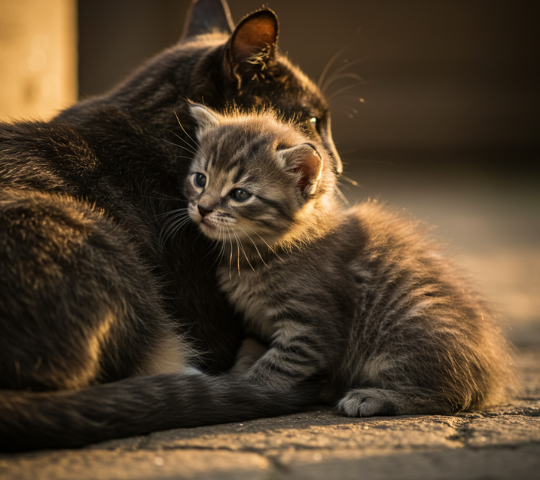
As kittens grow, their fur goes through some dramatic changes. Many owners notice that a newborn’s soft, sometimes patchy fur transforms as the kitten matures. This process—sometimes called a “fever coat”—can result in a noticeable cat fur color change.
Kittens might start out with one hue and gradually develop a fuller, more defined coat as their body temperature, hormones, and genetics take full effect. Certain breeds, like Siamese, are known for their evolving color points, meaning that as they age, they might display darker ears, paws, and tails. It’s all part of the natural process of becoming an adult cat.
For many pet parents, watching these changes is like witnessing a live work of art. Every fur stroke tells the story of growth. Even if your cat’s fur changing color gives you pause upon your first notice, remember that it’s often just part of nature’s plan. In other words, sometimes your cat changes color because that’s how evolution rolls.
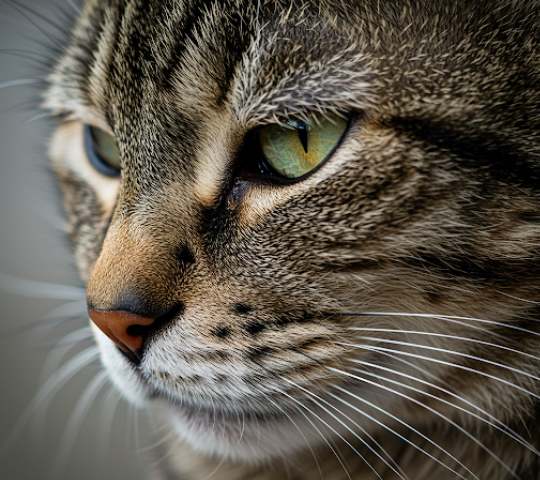
Much like humans start showing signs of gray hair, cats, too, can experience a slow, steady change in their coat color as they age. You might notice that those soft, deep shades of black or brown lighten, especially around the muzzle and eyes.
It’s part of aging, and it’s typically a slow process. It doesn’t happen overnight but more like a gradual fade that signals your cat’s maturity.
So if you see a bit of silver creeping in, don’t panic—it’s just your cat embracing its inner wise elder.
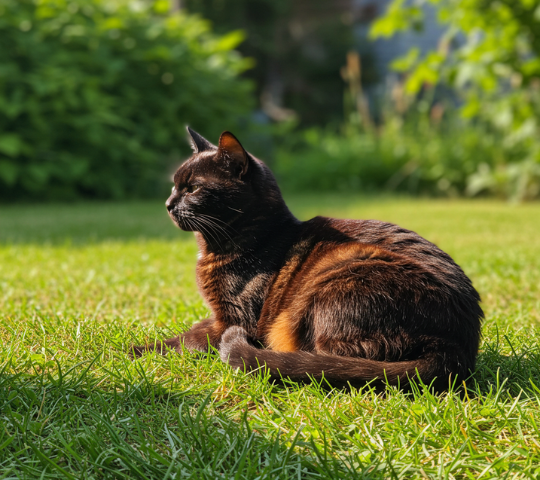
Believe it or not, the weather can also influence your cat’s coat. During summer, the sun’s rays might lighten your cat’s fur. Cats with a deep, dark coat might appear slightly faded after long hours of soaking up the sun.
This type of color change is often temporary. When the season shifts and the days become chilly, the fur may regain its original tone.
Remember, though, too much sun isn’t great for your cat. If you notice significant cat fur color change during summer, limit your furry friend’s direct exposure to sunlight. A bit of shade can help preserve that beautiful natural coat.

What your fur baby eats can also be a key factor to why your cat’s fur is changing color. Proper nutrition is crucial for your cat’s overall health and gives it a shiny, vibrant coat. Certain nutritional deficiencies or imbalances can sometimes lead to changes in your cat’s fur color.
Ever wondered what gives black cats their sleek, dark fur? Or what makes a tabby’s stripes so richly colored? The answer lies partly in pigments called melanins. These pigments rely on specific amino acids, particularly tyrosine, and phenylalanine, which are the essential building blocks for producing those beautiful dark colors in your cat’s fur.
If a cat’s diet lacks tyrosine and phenylalanine, it can impact their melanin production. This lack of nutrients is most noticeable in cats with black or dark brown fur. Instead of a deep, rich black, their fur might develop a reddish or brownish discoloration. It’s almost like the black pigment is fading or being replaced by a warmer, rustier tone. You might see this cat fur color change most prominently in areas of new hair growth.
Where do cats get these crucial amino acids? From their food! High-quality cat food, especially those formulated for optimal coat health, will contain adequate levels of tyrosine and phenylalanine. That’s why feeding your cat a complete and balanced diet is crucial.
“Complete and balanced” means the food contains all the essential nutrients a cat needs in proper proportions. Look for a statement on the food packaging from AAFCO (the Association of American Feed Control Officials) to confirm it meets cats’ nutritional standards.
A cat with improper nutrition and health issues that affect nutrient absorption will likely develop an amino acid deficiency. As a result, your whiskered buddy could experience fur color changes. Often, simply switching to a high-quality, balanced cat food can make a significant difference!
Copper is another essential nutrient that plays a role in pigment production, among other critical bodily functions. While feeding your cat with commercially prepared cat food can reduce this risk, it can still occur, and one of the potential signs is—you guessed it—changes in fur color!
However, copper deficiency is rarely just about the fur color. Copper is vital for various processes in the body, including iron absorption, enzyme function, and nerve function. If your cat doesn’t get enough copper, it can lead to anemia, neurological issues, and impaired immune function.
So, if you suspect your frisky furball has it based on color changes in its coat or other symptoms like a poor coat or lethargy, consult your vet immediately!
Your vet can perform diagnostic tests to confirm a deficiency and determine the underlying cause. They can then recommend appropriate treatment, which might involve dietary changes or copper supplementation, always under their guidance.
Zinc is another essential mineral that cats need for good health, but it’s a delicate balance. While zinc deficiency is uncommon in cats fed balanced diets, excessive zinc intake can be a problem and cause your cat’s fur to change its color.
Excessive zinc can interfere with copper absorption in the body. If zinc blocks copper absorption, it can create a copper deficiency, even if there’s enough copper in the diet. As discussed earlier, copper deficiency can lead to coat discoloration, often resulting in reddish or brownish tones, especially in black cats.
Zinc toxicity in cats is usually not from their regular cat food but more likely from ingesting things like pennies minted after 1982 (which contain a lot of zinc), zinc oxide ointments, or supplements. Besides seeing your cat’s fur color change, zinc toxicity can cause numerous other symptoms, including vomiting, diarrhea, loss of appetite, lethargy, and even jaundice (yellowing of the skin and eyes).
Zinc toxicity is life-threatening and requires immediate veterinary attention. If you suspect your cat has ingested something containing zinc and see the signs discussed, take them to your vet promptly. Your vet can diagnose the problem and provide appropriate treatment to remove the excess zinc from your cat’s system and address related health issues.
Beyond specific mineral or amino acid deficiencies, general malnutrition can also be why your cat’s fur is changing color. A cat that doesn’t get enough nutrients will affect their overall health, including the look of their coat.
A malnourished cat might have dull, brittle fur and lacks luster. The color might appear faded, washed out, or simply unhealthy-looking. While specific color changes are more linked to certain deficiencies, general malnutrition can lead to a more overall decline in coat quality and vibrancy. Giving your kitty a high-quality, balanced cat food is key to good health and shiny fur!
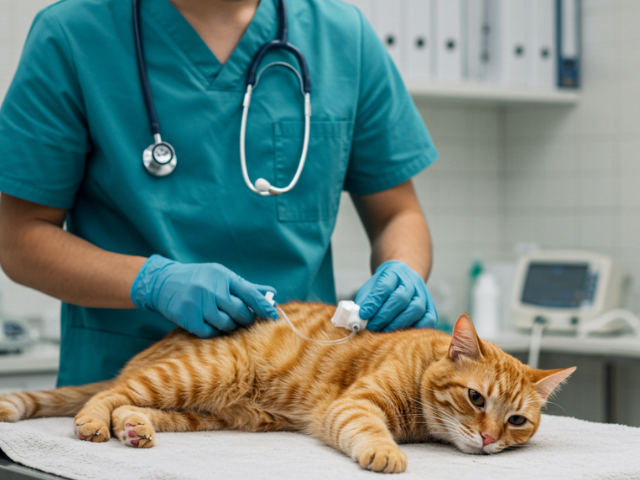
Sometimes, a cat fur color change isn’t caused by nature or nutritional hiccup. It can be a red flag for underlying medical conditions. While brushing off a color change as a normal part of aging is tempting, several health issues can lead to noticeable changes in your cat’s coat.
Vitiligo is an autoimmune condition that causes the loss of pigment in the skin and fur. In cats, this often shows up as well-defined white patches on an otherwise colored coat. If you notice sudden, stark patches of white appearing on your pet, it might be due to vitiligo.
The good news is that this condition is usually only cosmetic—it doesn’t typically affect your cat’s overall health. However, if you’re unsure whether or not your cat has it, it’s worth a call to your vet. Early diagnosis can help you understand what’s happening and how to best care for your cat. Even if your cat changes color, its health remains a top priority.
Another reason why your cat’s fur is changing color is feline hyperthyroidism. It’s a condition caused by an overactive thyroid gland, which can wreak havoc on your cat’s metabolism and overall coat quality.
Besides the color changes, hyperthyroidism might also present with weight loss, increased appetite, and hyperactivity. The fur may also become thinner and lose its luster.
Hyperthyroidism is more common in older cats, so if your senior pet is experiencing a change in fur color along with other symptoms, it’s crucial to consult your vet. With proper treatment, many of these symptoms can be managed effectively, allowing your cat to look as fabulous as ever—even if its cat fur changing its color is a part of the process.
The liver plays a vital role in detoxifying the body, and any dysfunction here can show up in surprising ways—such as a noticeable cat fur color change. When the liver isn’t functioning properly, toxins can build up in the body, sometimes affecting the skin and fur. You might see faded or discolored fur in different areas, accompanied by other symptoms like lethargy or a change in appetite.
A vet visit is a must if you suspect liver disease might be the reason behind your cat’s fur changing color. Liver issues are serious and need professional diagnosis and treatment. But don’t lose hope—a timely intervention can often improve your cat’s condition and bring back the natural vibrancy of its coat.
Like liver problems, kidney disease can also influence the health and appearance of your cat’s fur. When the kidneys aren’t filtering properly, waste products can circulate in the body and affect various tissues, including the skin and hair, leading to a subtle yet noticeable cat fur color change.
Like with any medical concern, early detection is key. Regular vet check-ups can help spot these issues before they progress too far. If your cat shows signs of fur color change along with other health concerns, make sure to get it checked out promptly.
Some cancers can be the reason why the fur of a cat changes color. For example, if a tumor disrupts normal metabolism or hormonal balance, you might see a gradual coat color change.
While it isn’t the most common reason for color shifts, it’s crucial to be aware of the possibility, especially if other symptoms like unexplained weight loss or lethargy accompany the change.
Infections—whether bacterial or fungal—can cause localized discoloration and hair loss. If you notice red, inflamed patches or scaly areas on your cat’s skin, these might be signs of an infection.
Such infections can create the illusion that your cat changes color, even though the issue is skin health. In these cases, a vet visit is essential to diagnose and treat the infection before it worsens.
While a medical explanation might sound severe, many of these conditions are manageable once caught early. Keeping an eye on your cat’s overall behavior and other symptoms can help you alleviate potential issues before they become too severe.
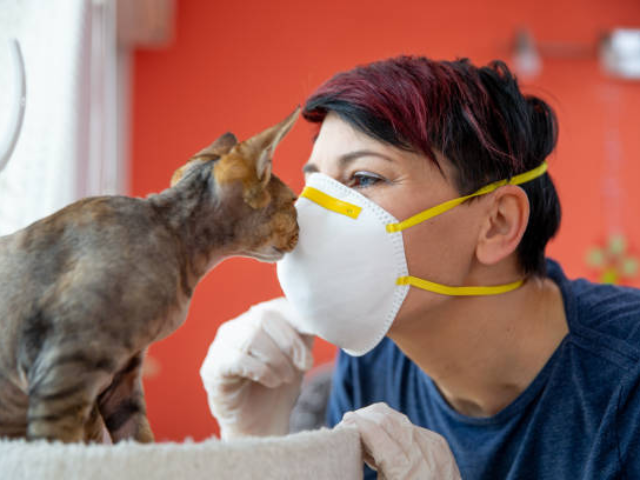
Sometimes, the reasons behind a cat’s fur changing color aren’t internal medical conditions or diet but external factors like medications or environmental exposures. Let’s take a look at some of these potential external influences.
Certain medications can have side effects in cats, and in some cases, fur discoloration can be one of them. It’s not a common side effect for most medications. However, it’s worth being aware of, especially if you notice fur changes after starting a new medication for your cat.
While not extensively documented for many common cat medications, some drugs might theoretically interfere with pigment production or affect coat quality. For example, certain chemotherapy drugs or medications that affect hormone levels could impact its fur appearance and texture.
Unfortunately, there isn’t a long list of specific cat medications definitively linked to fur color changes as a common side effect. If your cat’s fur color changes after starting a new medication, discuss it with your veterinarian.
Your vet can assess whether the medication is a likely culprit or if there might be other contributing factors. In addition, they can advise you on whether the fur change requires a treatment plan. Never stop or adjust your cat’s medication without consulting your veterinarian first.
Chemical exposure can cause fur discoloration in cats. Common household chemicals like bleach, strong cleaning products, disinfectants, and some garden chemicals can cause fur discoloration if your cat comes into contact with them.
Bleach, in particular, is a potent bleaching agent and can lighten or even turn fur white in the areas of contact. Other chemicals might cause staining, leading to yellowish, brownish, or discolored patches.
It’s crucial to keep all potentially harmful chemicals safely stored away and out of reach of your cat. When cleaning with chemicals, ensure your cat is far from the area until it’s thoroughly dry and well-ventilated. Avoid using harsh chemicals in places where your cat spends a lot of time.
If your cat accidentally comes into contact with a chemical and you notice fur discoloration, gently wash the affected area with mild soap and water. If you are unsure about the chemical or if your cat shows any signs of skin irritation, licking, or illness after chemical exposure, contact your veterinarian or a pet poison control hotline right away. Chemical exposure can sometimes cause skin burns, irritation, or even systemic toxicity, depending on the substance.
While stress is unlikely to cause dramatic, direct color changes in your cat’s fur pigment, it can impact their coat and skin health, leading to less vibrant fluff.
Stress in cats can manifest in various physical ways. One is excessive grooming. A stressed cat might over-groom themselves, sometimes to the point of causing hair loss or skin irritation. This excessive grooming can sometimes lead to changes in the appearance of the coat.
For example, constant licking might make the fur look wet, matted, or less fluffy. In areas of hair loss due to overgrooming, the underlying skin might be more visible, giving the impression of a cat’s fur changing its color, even if it’s more about altered skin visibility than actual fur pigment change.
Stress can also sometimes contribute to a duller or less healthy-looking coat. Chronic stress can impact the immune system and general well-being, affecting coat quality and vibrancy.
While stress itself is not a direct cause of cat fur color change in terms of pigment alteration, it can affect your kitty’s coat appearance. If you notice changes in your cat’s grooming habits, coat condition, or behavior, try to identify and address the potential stressors in their environment. Providing your cat with a calm, safe, and predictable environment can help reduce stress and promote overall well-being, which leads to a healthier coat.
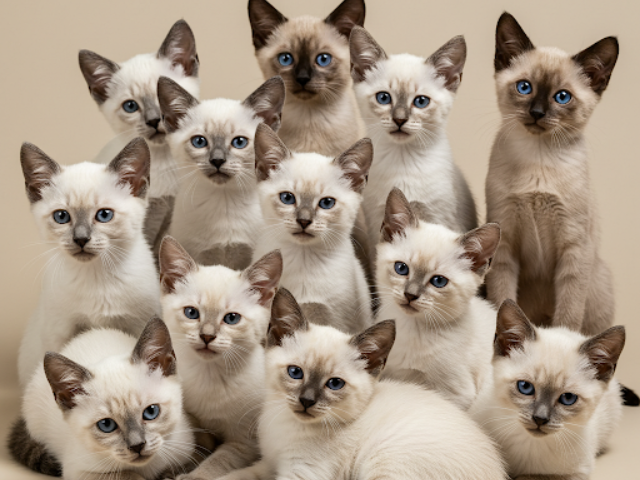
Every cat is unique, and sometimes, a cat’s fur changing color is a part of your pet’s breed characteristics. Some breeds are naturally more prone to color variations, and knowing what to expect can ease your worries.
Siamese cats are famous for their colorpoint patterns, where the fur on their ears, paws, and tail is darker than the rest of the body. This pattern is temperature-sensitive, meaning that when a Siamese cat gets warmer, its darker areas can become even more pronounced.
As your cat ages or its body temperature changes throughout the day, you might notice a subtle cat fur color change that is entirely normal for the breed. It’s just how these unique cats roll, showing off a coat that’s as dynamic as their personality.
Siamese aren’t the only breeds that show such changes. Burmese and Himalayans also exhibit variations in fur color due to genetics and environmental influences.
If your cat belongs to one of these breeds, a noticeable shift in coat color is part of its natural pattern. Knowing your cat’s breed traits can help you differentiate between normal variations and potential health concerns.

While we’ve covered many reasons why your cat’s fur is changing color, and many of them are perfectly normal, it’s critical to know when a color change warrants a visit to the veterinarian. Ultimately, you know your cat best, and trusting your instincts is key.
Here are some guidelines on when a cat’s fur color change should need a vet visit:

A cat’s fur color change can be natural, but it can also be confusing. Regardless of why your cat’s fur is changing color, staying vigilant is key. Know why your cat changes color so you can give your feline friend proper care. Remember, a subtle change in color doesn’t necessarily spell trouble. Keep an eye on your pet, provide a healthy diet, and consult your vet when in doubt. Your cat’s coat might change, but your commitment to its well-being should always remain stead

